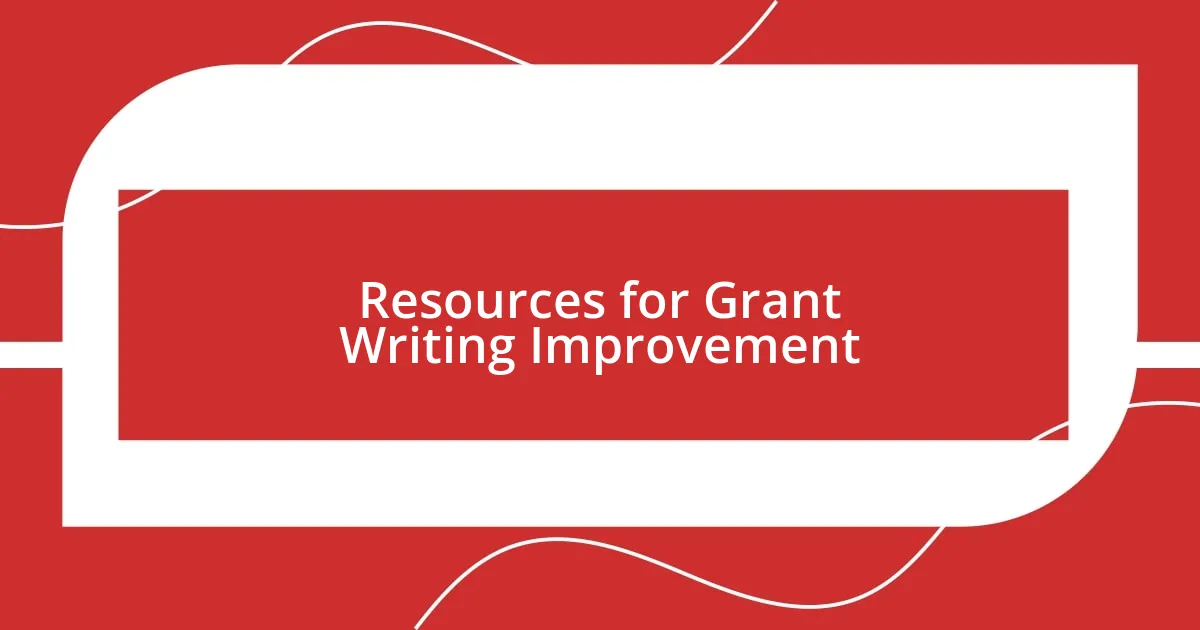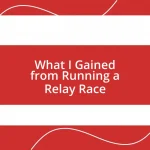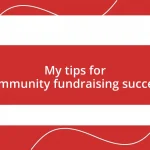Key takeaways:
- Understanding storytelling and personal narratives enhances grant proposals by appealing to funders’ emotions.
- Thorough and transparent budgeting is crucial; clear, detailed budgets build credibility and align with project narratives.
- Tailoring proposals to align with specific funders’ priorities and clearly defining project goals improves chances of success.
- Creating compelling executive summaries and engaging stakeholders early can lead to more effective proposals.

Understanding Grant Writing Basics
Grant writing can feel like navigating a labyrinth at first. I still remember the first time I attempted to write a grant proposal—my head was spinning with all the jargon and requirements. It struck me how vital it is to understand the key components, such as the statement of need and the budget, because they are the backbone of your proposal. Have you ever felt overwhelmed by so much information? I know I did, and it took patience and persistence to see the path clearer.
One of the most valuable lessons I’ve learned is the importance of storytelling in grant writing. Funders often want to know not just the facts but also the passion behind the project. I recall shifting my approach after realizing that weaving in a personal story capturing the essence of the cause added depth and urgency to my proposal. Can you picture how a compelling narrative can create a connection that numbers alone can’t? We have to appeal to funders’ emotions as much as their analytical side.
Lastly, I’m continually fascinated by how crucial research is in this process. Each time I dive into a grant application, I find myself sifting through data and previous studies to support my arguments. It’s enlightening to see how evidence can elevate a proposal from a simple request for funds to a well-researched initiative poised for impact. Have you considered how this aspect can set your proposal apart? Being informed can sometimes be the edge you need in a competitive landscape.

Developing a Strong Proposal Narrative
When developing a strong proposal narrative, it’s essential to create a vivid picture that resonates with the reader. I remember my early attempts where I fell into the trap of merely stating facts and figures, only to realize how flat my proposals sounded. Shifting my focus to the stories behind the numbers made a world of difference. A strong narrative weaves in personal experiences and community connections, making the need not just visible, but felt.
Here are key elements to consider for your proposal narrative:
- Engaging Opening: Start with a powerful hook that draws the reader in.
- Clarify the Need: Clearly articulate the problem your proposal addresses using real-life examples.
- Personal Connection: Share personal stories that highlight the impact of the project.
- Vision of Success: Paint a picture of the desired outcomes—what success looks like for the community.
- Call to Action: End with a compelling reason for the funder to respond positively to your proposal.
In my experience, grounding the narrative in real-world impact can transform a generic proposal into a compelling case for support. It’s not just about what you need; it’s about the difference you will make.

Budgeting for Grant Applications
When it comes to budgeting for grant applications, I can’t stress enough how crucial it is to be thorough and transparent. During my first grant application, I underestimated the importance of detailing every single expense. It became painfully clear that a vague budget could raise red flags for reviewers. They want to see a realistic and well-structured budget that aligns with your narrative. What I’ve learned is that clarity in budgeting can reflect your professionalism and commitment to the project.
Accuracy in your budget not only builds credibility but also helps you think through the project’s overall viability. In one instance, I meticulously broke down costs related to personnel, equipment, and supplies, which ultimately led to an approval. Funders appreciate when you justify each line item, as it shows you’ve done your homework and have a well-thought-out plan. Have you ever had an experience where detailed planning led to unexpected success?
Lastly, I’ve discovered that many funders have specific budget guidelines, and adhering to them is non-negotiable. I once had a proposal rejected because I failed to follow the formatting rules for presenting my budget. It was a tough lesson learned. Always review the funder’s instructions thoroughly; it’s a small but essential step that can make or break your application.
| Budget Component | Description |
|---|---|
| Personnel Costs | Salary and benefits for individuals working on the project |
| Equipment | Cost of any tools or technology needed to execute the project |
| Consumables | Materials and supplies that will be used during the project |
| Travel Expenses | Costs related to travel for project-related activities |
| Indirect Costs | Overhead expenses that are not directly attributed to the project |

Common Mistakes in Grant Writing
One of the most common mistakes I’ve made in grant writing is failing to tailor my proposal to the specific funder’s priorities. Early on, I often used a “one-size-fits-all” approach, thinking that a strong narrative was enough. But I learned the hard way that funders have distinct goals. For instance, I once submitted an application that didn’t align with the funder’s mission, leading to a swift rejection. It’s vital to research and reflect their values in your proposal.
Another pitfall many encounter, myself included, is being too ambitious with project goals. Initially, I was eager to tackle multiple issues at once, believing that a grand vision would impress funders. However, I realized that focusing on a well-defined project with achievable outcomes made for a more compelling case. Have you ever tried to juggle too many balls at once? It’s tempting but often leads to overwhelming proposals that don’t convince anyone. Simplicity and clarity are key.
Additionally, grammatical errors and poor formatting can undermine a well-crafted proposal. I recall one instance when my formatting was inconsistent, which gave the impression of carelessness. My fear was confirmed when the reviewers noted the lack of professionalism in their feedback. It’s a simple step, yet taking the time to proofread can greatly enhance the credibility of your submission. I’ve found that reading my proposal aloud not only helps catch errors but also lets me experience the flow of my narrative, ensuring it resonates with the audience.

Tips for Grant Proposal Success
One of the most effective tips I’ve come across is to create a compelling narrative that clearly outlines the need for your project. I recall a time when I focused too much on data and statistics, thinking they would speak for themselves. But then I realized how crucial it is to weave a story that resonates on an emotional level. Funders are human, after all. Have you ever read something that just pulled at your heartstrings? That’s the kind of impact your proposal can have when you illustrate the real-world implications of your project.
Moreover, engaging stakeholders early in the process can significantly enhance your proposal. When I collaborated with community members and potential beneficiaries, I felt a shift in the quality of my application. Their feedback offered insights I could never have generated alone. It’s similar to a team brainstorming session; diverse perspectives can often lead to a more robust proposal. I’ve found that showcasing collaboration in your application demonstrates a commitment to inclusiveness and shared ownership, which is something many funders appreciate.
Finally, don’t underestimate the power of a well-crafted executive summary. The first few lines can be make-or-break for grabbing a reviewer’s attention. In a previous grant application, I spent the afternoon refining my summary, focusing on clarity and impact. It was worth every minute. A strong opening can invite the reviewer to dive deeper into your proposal. Think about it: when was the last time you read something that hooked you right from the start? That’s the effect you want your summary to have.

Resources for Grant Writing Improvement
When I was looking to refine my grant writing skills, I found online courses to be incredibly helpful. Platforms like Coursera and LinkedIn Learning offer modules specifically on grant writing. I remember completing one that broke down the process step-by-step, making things like budget justification much clearer. What resource did you find most illuminating in your journey?
Books have also played a significant role in my growth. One that stands out is “The Grant Writer’s Handbook” by Judith Ann Dwyer. Not only does it provide practical tips, but it also emphasizes the emotional component of storytelling in proposals. After reading it, I felt more confident integrating personal anecdotes into my narratives. It truly shifted my perspective on how to engage the funders’ hearts, not just their minds.
Finally, I’ve discovered the power of peer feedback. Joining a writers’ group focused on grant writing has been transformative. Sharing drafts with others who are on similar journeys can provide critical insights that I might overlook. Have you had a chance to get feedback from someone who understands the nuances? It can be a game changer—tightening up your proposal and injecting fresh ideas into your approach makes a noticeable difference.















